
Martin Nodell was an American cartoonist and commercial artist, best known as the creator of the Golden Age superhero Green Lantern. Some of his work appeared under the pen name Mart Dellon.
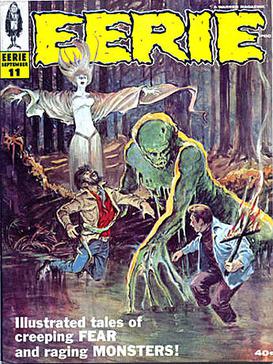
Eerie was an American magazine of horror comics introduced in 1966 by Warren Publishing. Like Mad, it was a black-and-white magazine intended for newsstand distribution and did not submit its stories to the comic book industry's voluntary Comics Code Authority. Each issue's stories were introduced by the host character, Cousin Eerie. Its sister publications were Creepy and Vampirella.
Warren Publishing was an American magazine company founded by James Warren, who published his first magazines in 1957 and continued in the business for decades. Magazines published by Warren include After Hours, Creepy, Eerie, Famous Monsters of Filmland, Help!, and Vampirella.
Ralph Reese is an American artist who has illustrated for books, magazines, trading cards, comic books and comic strips, including a year drawing the Flash Gordon strip for King Features. Prolific from the 1960s to the 1990s, he is best known for his collaboration with Byron Preiss on the continuing feature "One Year Affair", serialized in the satiric magazine National Lampoon from 1973 to 1975 and then collected into a 1976 book.
Sydney Shores was an American comic book artist known for his work on Captain America both during the 1940s, in what fans and historians call the Golden Age of comic books, and during the 1960s Silver Age of comic books.
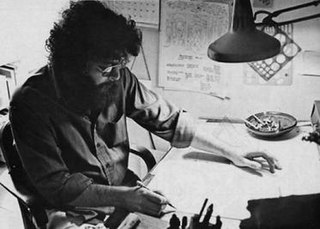
Thomas F. Sutton was an American comic book artist who sometimes used the pseudonyms Sean Todd and Dementia. He is best known for his contributions to Marvel Comics and Warren Publishing's line of black-and-white horror-comics magazines, particularly as the first story-artist of the popular character Vampirella.

Rog-2000 is a fictional robot that was the first professional creation of comic book artist-writer John Byrne. Rog-2000 serves as the mascot of Byrne Robotics.
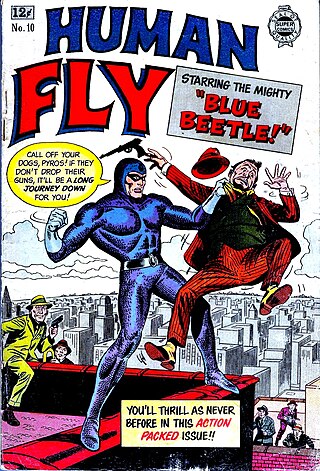
I.W. Publications was a short-lived comic book publisher in the late 1950s and early 1960s. The company was part of I.W. Enterprises, and named for the company's owner, Israel Waldman. I.W. Publications was notable for publishing unauthorized reprints of other publishers' properties. Usually these companies were already out of business.

Vincent Alascia, also known as Nicholas Alascia, was an American comic book artist known for his work on Captain America during the Golden Age of comics, and for his 23-year run as inker on a single creative team, with penciler Charles Nicholas Wojtkowski and writer Joe Gill at Charlton Comics from 1953 to 1976.
Bruce Eliot Jones whose pen names include Philip Roland and Bruce Elliot, is an American comic book writer, novelist, illustrator, and screenwriter whose work included writing Marvel Comics' The Incredible Hulk from 2001 to 2005.

Soloman "Sol" Brodsky was an American comic book artist who, as Marvel Comics' Silver Age production manager, was one of the key architects of the small company's expansion to a major popular culture conglomerate. He later rose to vice president, operations; and vice president, special projects. "Sol was really my right-hand man for years", described Marvel editor and company patriarch Stan Lee.
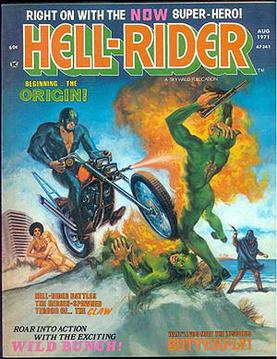
Hell-Rider is a short-lived, black-and-white comics magazine published by Skywald Publications, a 1970s company best known for its horror comics magazines Nightmare, Psycho, and Scream. Like them and the similar publications of Warren Publishing, these were mature-audience magazines not covered by comic books' Comics Code Authority. Its cover price was 60¢, typical for that format and time, during which standard comic books sold for 15¢.
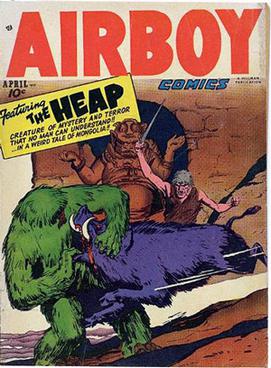
The Heap is the name of several fictional comic book muck-monsters, the original of which first appeared in Hillman Periodicals' Air Fighters Comics #3, during the period fans and historians call the Golden Age of Comic Books. The Heap was comics' first swamp monster.
Pablo Marcos Ortega, known professionally as Pablo Marcos, is a comic book artist and commercial illustrator best known as one of his home country Peru's leading cartoonists, and for his work on such popular American comics characters as Batman and Conan the Barbarian, particularly during the 1970s. His signature character was Marvel Comics' the Zombie, for which Marcos drew all but one story in the black-and-white horror-comics magazine Tales of the Zombie (1973–1975).

Tower of Shadows is a horror/fantasy anthology comic book published by the American company Marvel Comics under this and a subsequent name from 1969 to 1975. It featured work by writer-artists Neal Adams, Jim Steranko, Johnny Craig, and Wally Wood, writer-editor Stan Lee, and artists John Buscema, Gene Colan, Tom Sutton, Barry Windsor-Smith, and Bernie Wrightson.
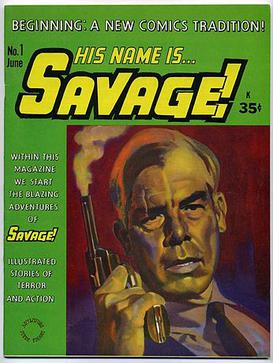
His Name Is... Savage is a 40-page, magazine-format comics novel released in 1968 as a precursor to the modern graphic novel. Created by the veteran American comic book artist Gil Kane, who conceived, plotted and illustrated the project, and writer Archie Goodwin, who scripted under the pseudonym Robert Franklin, the black-and-white magazine was published by Kane's Adventure House Press, and distributed to newsstands.

Blazing Combat was an American war-comics magazine published quarterly by Warren Publishing from 1965 to 1966. Written and edited by Archie Goodwin, with artwork by such industry notables as Gene Colan, Frank Frazetta, John Severin, Alex Toth, and Wally Wood, it featured war stories in both contemporary and period settings, unified by a humanistic theme of the personal costs of war, rather than by traditional men's-adventure motifs.
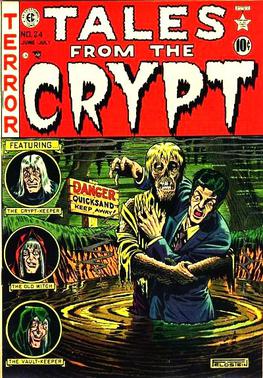
Horror comics are comic books, graphic novels, black-and-white comics magazines, and manga focusing on horror fiction. In the US market, horror comic books reached a peak in the late 1940s through the mid-1950s, when concern over content and the imposition of the self-censorship Comics Code Authority contributed to the demise of many titles and the toning down of others. Black-and-white horror-comics magazines, which did not fall under the Code, flourished from the mid-1960s through the early 1980s from a variety of publishers. Mainstream American color comic books experienced a horror resurgence in the 1970s, following a loosening of the Code. While the genre has had greater and lesser periods of popularity, it occupies a firm niche in comics as of the 2010s.
Alan Hewetson was a Scottish-Canadian writer and editor of American horror-comics magazines, best known for his work with the 1970s publisher Skywald Publications, where he created what he termed the magazines' "Horror-Mood" sensibility. He went on to become a publisher of city magazines in Canada.















